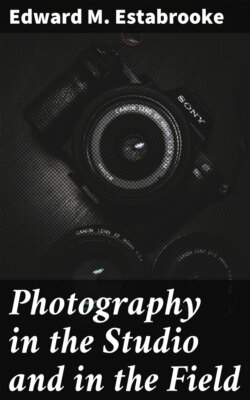Читать книгу Photography in the Studio and in the Field - Edward M. Estabrooke - Страница 21
На сайте Литреса книга снята с продажи.
NEGATIVE COLLODION. A.
ОглавлениеEther and alcohol, equal parts. Climax cotton (Anthony's), 3 grains to the oz. Negative cotton p25 (Anthony's), 1 grain to oz. Place the cotton in the ether first, then add the alcohol and sensitize with
| Iodide of Ammonium | 3 grains to ounce |
| Iodide of Lithium | 1 |
| Bromide of Cadmium | 2 |
Collodion prepared after this formula gives very pleasing results and is rather more rapid than the average.
In many cases it is well to have two samples of collodion differing in formulæ, mixing them in varying proportions, according to the effect desired.
A good formula for mixing with the above is as follows. It can be used separately if desired, but is not primarily intended to be used alone:
Plain collodion, prepared as in the preceding formula, but with a different cotton, Anthony's snowy Cotton, for instance, to each ounce of the plain collodion add:
| Iodide of Potassium | 2½ grains |
| Bromide of Cadmium | 2 |
| Iodide of Cadmium | 2½ |
The iodide of potassium is insoluble in absolute alcohol and ether, therefore it must be first dissolved in the smallest quantity of water possible and then added to the collodion. A portion will even then most probably be precipitated; if it is not, it would be an indication that the alcohol or ether used were either one or both of a higher specific gravity than they should be.
It is more important that the ether should be pure than the alcohol, as the former is often contaminated or adulterated with water as well as with alcohol, and sometimes contains impurities of an acid nature.
Ether, for photographic purposes, should not have a p26 higher specific gravity than 720, and the alcohol should never be used for collodion when below 95 per cent., as the presence of water in the collodion makes the film weak and glutinous.
Most formulæ for collodion prescribe alcohol and ether in equal parts, but these may be varied with advantage during the hot season; for instance, the alcohol may be used in somewhat larger proportion, as the tendency to evaporation is much more with a high temperature, and alcohol evaporates less rapidly than ether. Consequently the flowing quality of the collodion and the evenness of the film would be promoted by a not too rapid congelation or setting of the film. And again, during the cold season, the ether may be used in larger proportion, to promote a more rapid evaporation and setting of the film. By a moderately close observation of the action of collodion under varying temperatures, the operator might soon learn how to modify his formulæ to suit all conditions of heat and cold.
It should be mentioned that it would not be correct to vary the proportions of ether and alcohol very greatly, as an over proportion of alcohol would render the collodion weak and glutinous, and, being very soluble in water, would the sooner injure the silver solution. On the other hand too great a proportion of ether would make the collodion less sensitive.
